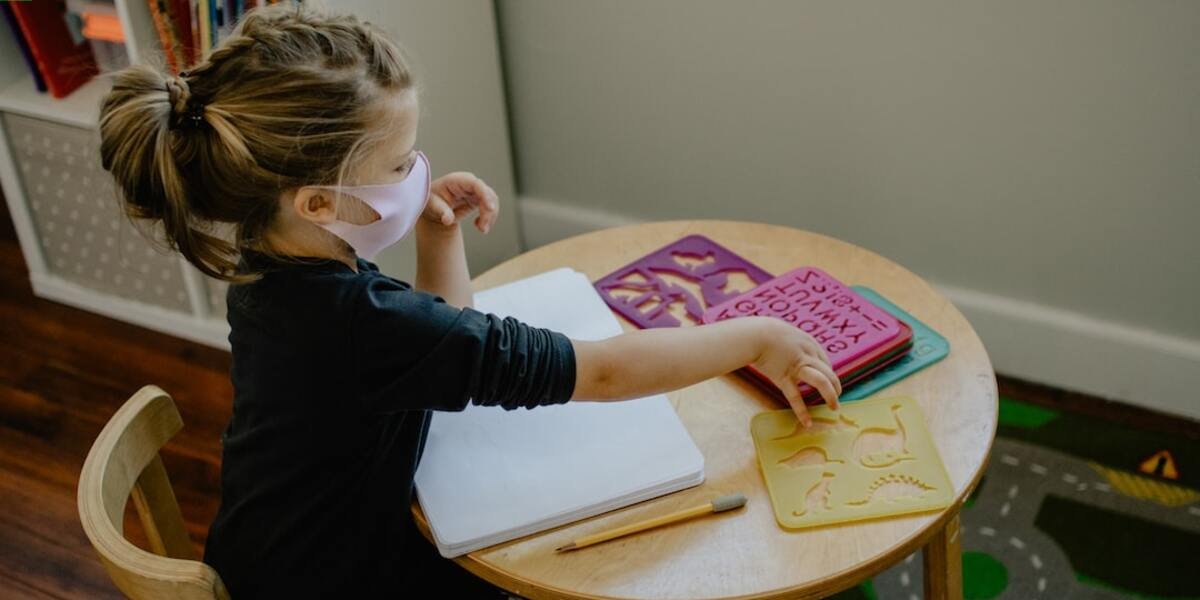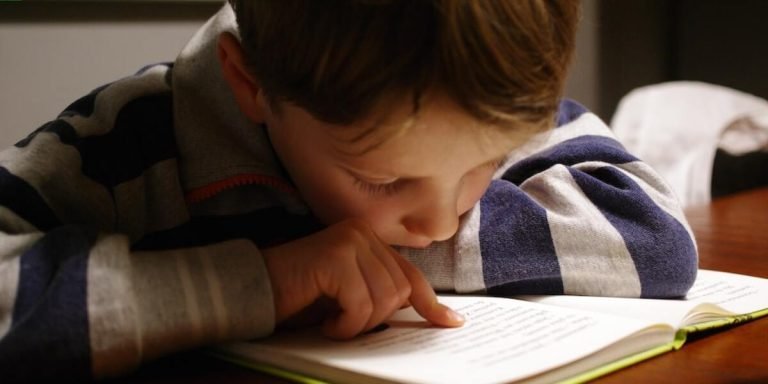What Age is 3rd Grade? Understanding Child Educational Development
Understanding your child’s educational journey is a crucial part of their learning process. Knowing what age is 3rd grade, and the developmental milestones associated with this stage can help in fostering an environment that best suits their growth. This critical period of elementary school education shapes cognitive abilities and social skills pivotal to the individual’s overall development.
In our intricate exploration of “what age is 3rd grade”, we’ll delve into various aspects such as academic expectations, emotional changes, physical developments and how parents or caregivers can support them through it all. Equipped with this knowledge, you will be better able to guide your young learner towards reaching his/her full potential both within classroom walls and beyond.
Did you know?
Did you know that the average age for 3rd graders in the United States is around 8 to 9 years old? This age signifies a crucial transitioning period, as children shift from learning to read, into reading to learn.
Understanding the Typical Age Range for 3rd Grade Students
The third grade is a significant period in elementary school education, marking the transition from lower to upper primary level. Students typically reach this stage between 8 and 9 years of age but can differ depending on their birthdays or specific academic milestones achieved. This year serves as a pivotal moment when foundational skills are consolidated alongside exposure to more complex concepts.
Understanding your child’s typical age during the third-grade aids parents with planning for developmental stages effectively. At this age, kids start embracing independent thinking; they begin reading-to-learn rather than learning-to-read and tackle intricate mathematical problems such as multiplication and division which require higher cognitive abilities compared to simple addition or subtraction performed previously.
As we navigate through the era marked by exponential advancement in technology that starts manifesting even more dominantly since 2023, adapting our guidance techniques becomes critical too. We stand shoulder-to-shoulder with you enabling scholarly achievements along with nurturing emotional wellbeing at each step hence catering holistically towards building resilient future leaders.
Identifying Key Developmental Milestones for Third Graders
While understanding the typical age range for 3rd grade students is essential, it’s equally vital to recognize the significant developmental milestones that a third-grader typically exhibits. Knowing these can enlighten you on what age is 3rd grade targeting in terms of cognitive and physical development.
Children usually enter third-grade classrooms at eight or nine years old, marking an exciting transition from lower-level elementary learning to confident, independent thinking. This evolution appears in several key areas:
1) **Reading and Literacy**: Third graders often make a dramatic leap forward with their literacy skills. They’re not just learning to read anymore; instead, they’re reading to learn new information across various subjects such as science, social studies, and math.
2) **Writing**: You’ll notice your child now writes more complex sentences compared to second grade. Children this age start using compound sentences routinely while also improving spelling grammar.
3) **Mathematical Skills**: At this stage of elementary education in 2023 , children begin applying previously mastered computational skills like addition and subtraction towards solving multi-step problems involving multiplication and division too.
4) **Social-Emotional Growth** : Not only do academics see growth during third grade but socially-emotionally too! Kids at this level tend to form stronger friendships & show more empathy toward peers’ feelings-third graders become increasingly capable of resolving conflicts independently without adult intervention.
How School Systems Determine Placement in the Third Grade
School systems typically place students in the third grade based on two primary factors: age and academic readiness. Let’s delve into these aspects to get a clearer understanding of what age is 3rd grade accredited for, and how children’s overall development plays an essential role.
Age becomes the foremost consideration for third-grade placement. In most US school systems, youngsters who are aged between eight and nine years old attend this grade level. Specifically speaking, if your child turns nine between September of one year and August of the next year (2023-2024), they will likely be placed in 3rd Grade during that school year.
However, it’s imperative to note that merely meeting the age criteria does not guarantee automatic promotion to this academic stage—therefore bringing us to our second factor – Academic Readiness. Schools also evaluate whether pupils possess necessary skills commensurate with their respective grades before making a conclusive decision about progression or retention.
Educators may conduct assessments at specific intervals throughout prior schooling periods like Kindergarten through Second Grade, specifically focusing on literacy proficiency —an area deemed critical for success as they move up educational rungs. The intention behind such evaluation processes allows teachers distinct insights concerning each student’s capabilities within areas crucial transiting smoothly from lower elementary stages onto upper ones – i.e., Third Grades onward!
Curriculum Expectations for 3rd Grade Education
As children embark on their educational journey, the third-grade milestone often marks a significant transformation in their academic trajectory. Around 8 to 9 years of age is typically when they enter this phase – an exciting time of growth and discovery as they step into the world of more complex concepts and responsibilities. As such, mastering curriculum expectations at this stage is instrumental for future learning endeavors.
In today’s rapidly evolving education landscape influenced by digital advancements even in year 2023, understanding what exactly constitutes these curriculum expectations can empower parents and educators alike to effectively guide young students through their third-grade experience. Emphasis now goes beyond just literacy or numeracy skills; it extends to socio-emotional development along with cognitive competencies that would serve them well in our fast-paced society.
The comprehensive nature of a modern-day third grade curricula involves elements like critical thinking infused reading programs where kids learn about context comprehension while also honing writing abilities which tie back tot he keyword ‘what age is 3rd Grade’. Multi-dimensional mathematical exercises enhance problem-solving skill sets while scientific explorations widen conceptual knowledge horizons. It becomes vital then that everyone involved comprehend these benchmarks so we may collectively ensure an enriching elementary school education environment for pupils across the board.
Core Academic Subjects Covered in Third-Grade Classes
In third-grade education, a robust curriculum is expected that covers various core academic subjects. This stage of learning sets the groundwork for future studies and plays an instrumental role in shaping your child’s overall educational perspective.
So, what age is 3rd grade? Typically, children are about eight or nine years old when they step into their third-grade classes. At this significant juncture of elementary school education in 2023 and beyond, learners encounter a comprehensive blend of basic subject matter designed to enhance their existing knowledge pool while nurturing new skills.
Firstly comes mathematics – an area where students dive deeper into fundamental concepts like multiplication and division techniques along with tactics on how to solve word problems involving these operations. The goal here is not just rote memorization but cultivating logical reasoning capabilities too.
Language Arts make another critical section of the third-grade syllabus as kids traverse through more advanced grammar rules including punctuation marks usage plus sentence structure understanding better than before. They also start writing detailed paragraphs expressing opinions or recounting events clearly which significantly bolster communication skills both verbally and written down on paper.
Your little ones will then explore life science topics within Science lessons such as plants’ lifecycle stages alongside physical sciences detailing simple machines operation principles thereby fostering scientific curiosity right from now itself!
Social Studies come up next where attention turns towards community roles difference comprehension coupled with early US history glimpses that prepare pupils sufficiently for high-level social sciences study eventually later during schooling years thereafter onwards.
The Role of Standardized Testing and Benchmarks at This Stage
As your child steps into 3rd grade, which is typically around the age of eight or nine, standardized testing and benchmarks become a significant part of their academic journey. The reason for this level of evaluation at what age is 3rd grade lies in its place within elementary school education.
With the introduction to more complex curriculums in subjects like mathematics, science, social studies and language arts; it becomes crucial to determine where each student stands regarding these core educational areas. Standardized tests serve as an objective method that allows educators to monitor students’ progress throughout the year while identifying any potential gaps in their learning process that may need attention.
Moreover, benchmarks set at this stage lay down specific expectations concerning what children should know upon completing third-grade. These goals are aligned with national standards for elementary education and provide teachers with a roadmap towards ensuring every student meets them by year-end — facilitating fair grading practices across classrooms.
It cannot be stressed enough how essential these measurements are not just from an institutional perspective but also for parents who want insight into their child’s learning trajectory compared against peers nationwide.
Remember though – While useful tools themselves when used appropriately & responsibly; overemphasis on test scores can create unhealthy stress among youngsters causing adverse effects on both mental health & love for learning itself—something we certainly don’t want happening!
Navigating the Social and Emotional Landscape of 3rd Grade
Understanding the age group of third graders will help parents and educators navigate the social and emotional landscape of this critical phase in elementary education. As a general rule, children who are attending 3rd grade fall into an age bracket of 8 to 9 years old. This is considered by many experts as one zone where significant cognitive development takes place.
At this crucial stage, commonly known throughout educational circles as middle childhood, youngsters start honing their ability to think logically while developing more independence from adults which can be both exciting but also formidable for them too. They build friendships that potentially last longer than in earlier grades, thereby revealing complex dynamics such as peer pressure or rivalry.
Overcoming challenges faced during these years unique to every child requires empathy-filled engagement guided with contextual understanding from us grown-ups – whether parent or educator alike- since our role becomes vital not just academically but emotionally too! One must remember when dealing with issues such as self-esteem low points caused due to academic struggles that they’re all valuable learnings formative for their future.
Fostering Peer Relationships and Social Skills Amongst Eight to Nine-Year-Olds
Understanding the social dynamics of elementary school during third grade is a crucial part of childhood growth and development. At this stage, children typically fall within the age bracket eight to nine years old—an apt response to “what age is 3rd grade”. This period marks an important phase in their fundamental education as they utter their first steps into deeper interpersonal relationships.
During third-grade education, your child will begin recognizing diversity amongst peers while also understanding individuality. Learning how to interact effectively with classmates becomes pivotal at this point. As parents or educators, it’s vital we foster conditions conducive for developing healthy peer relationships and honing strong social skills in these youngsters.
For starters, encourage group activities that stimulate shared responsibility. Whether it’s performing classroom chores together or engaging in interactive projects like model-building; collective tasks help teach kids about teamwork and cooperation—skills instrumental for future endeavors.
Another critical aspect lies in fostering open communication between children. Encouraging them to express feelings, concerns or exciting news helps establish trust among peers whilst teaching respect for each other’s personal experiences.
Let us not overlook conflict resolution: Guide kids through peaceful negotiation so they learn from disagreements instead of being spiteful against one another—it teaches life-long lessons on working out differences constructively even outside academic settings.
Lastly but importantly instill empathy by modeling kind behavior yourself because young minds are greatly influenced by what they see around themselves consistently.
Supporting Emotional Well-being Through Elementary School Transitions
Understanding the emotional aspects of school transitions is critical for parents, particularly when it comes to your child entering 3rd grade. Grasping this pivotal stage in their educational journey allows you to better support them as they navigate new challenges and experiences.
Around what age is 3rd grade? Typically, children are around eight or nine years old when they start third-grade education. This period can be an exciting yet stressful time since students face significant academic expectations along with social pressures from peers.
Emotionally speaking, children at this age begin realizing that not everyone perceives situations identically. They’re also starting to form complex friendships while battling self-esteem issues tied to perceived success or failure both academically and socially.
Original content.
1. Validate Their Emotions: Youngsters may express stress regarding schoolwork balance alongside maintaining friendships outside classrooms; validate their feelings without judgment.
2. Encourage Open Communication: Make sure your child knows that it’s okay to express emotions openly about any difficulties encountered during these transitional periods.
3. Foster Resilience: Teach kids how resilience doesn’t mean being unaffected by upsetting events but rather dealing healthily with such circumstances—by talking things over or finding relaxing activities helpful on tough days.
4.Model Empathy: Show empathy towards others’ struggles so youngsters understand how important it is in forming lasting relationships against the backdrop of varying opinions and personalities.
Conclusion
So, when you ask “what age is 3rd grade,” the answer is typically eight to nine years old. But remember, every child’s journey in education unfolds uniquely as development isn’t always tied strictly to their age but also influenced by a myriad of factors including environment and individual aptitude.
There’s so much more to understand about educating children at each stage! Why not browse around our website for additional information on childhood educational development? Whether you’re an educator looking for new teaching methods or a parent seeking support in guiding your child through school life, we’ve got resources available that can help illuminate your path.
Happy learning!







